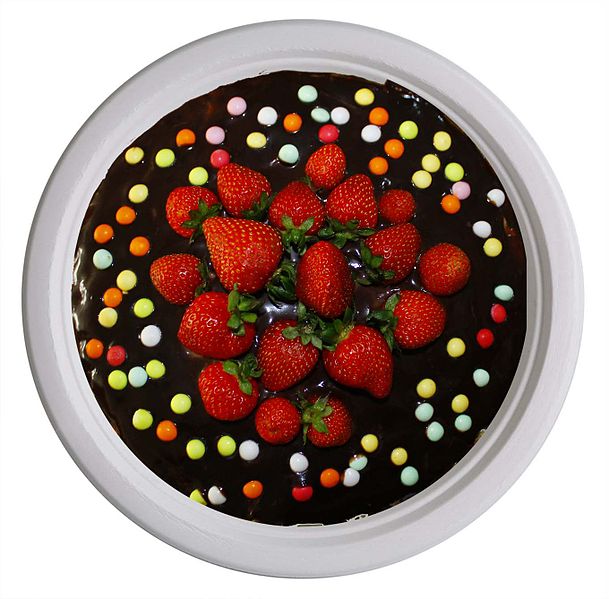Cake

Cake is a form of bread or bread-like food. In its modern forms, it is typically a sweet baked dessert. In its oldest forms, cakes were normally fried breads orcheesecakes, and normally had a disk shape. Determining whether a given food should be classified as bread, cake, or pastry can be difficult.
Modern cake, especially layer cakes, normally contain a combination of flour, sugar, eggs, and butter or oil, with some varieties also requiring liquid (typicallymilk or water) and leavening agents (such as yeast or baking powder). Flavorful ingredients like fruit purées, nuts, dried or candied fruit, or extracts are often added, and numerous substitutions for the primary ingredients are possible. Cakes are often filled with fruit preserves or dessert sauces (like pastry cream), iced with buttercream or other icings, and decorated with marzipan, piped borders or candied fruit.[1]
Cake is often the dessert of choice for meals at ceremonial occasions, particularly weddings, anniversaries, and birthdays. There are countless cake recipes; some are bread-like, some rich and elaborate, and many are centuries old. Cake making is no longer a complicated procedure; while at one time considerable labor went into cake making (particularly the whisking of egg foams), baking equipment and directions have been simplified so that even the most amateur cook may bake a cake.
Varieties
Cakes are broadly divided into several categories, based primarily on ingredients and cooking techniques.
- Yeast cakes are the oldest and are very similar to yeast breads. Such cakes are often very traditional in form, and include such pastries as babka and stollen.
- Cheesecakes, despite their name, aren't really cakes at all. Cheesecakes are in fact custard pies, with a filling made mostly of some form of cheese (often cream cheese,mascarpone, ricotta or the like), and have very little flour added, although a flour-based or graham cracker crust may be used. Cheesecakes are also very old, with evidence of honey-sweetened cakes dating back to ancient Greece.
- Sponge cakes are thought to be the first of the non-yeast-based cakes and rely primarily on trapped air in a protein matrix (generally of beaten eggs) to provide leavening, sometimes with a bit of baking powder or other chemical leaven added as insurance. Such cakes include the Italian/Jewish pan di Spagna and the French Génoise. Highly decorated sponge cakes with lavish toppings are sometimes called gateau; the French word for cake.
- Butter cakes, including the pound cake and devil's food cake, rely on the combination of butter, eggs, and sometimes baking powder or bicarbonate of soda to provide both lift and a moist texture.
Beyond these classifications, cakes can be classified based on their appropriate accompaniment (such as coffee cake) and contents (e.g. fruitcake or flourless chocolate cake).
Some varieties of cake are widely available in the form of cake mixes, wherein some of the ingredients (usually flour, sugar, flavoring, baking powder, and sometimes some form of fat) are premixed, and the cook needs add only a few extra ingredients, usually eggs, water, and sometimes vegetable oil or butter. While the diversity of represented styles is limited, cake mixes do provide an easy and readily available homemade option for cooks who are not accomplished bakers.



ไม่มีความคิดเห็น:
แสดงความคิดเห็น